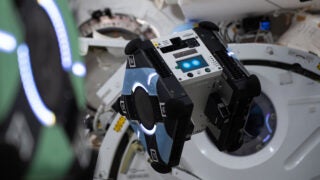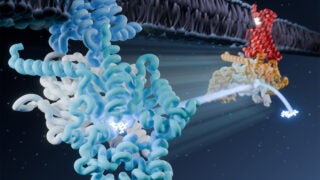Why Are USC Students Going to the Bottom of the Sea?
A USC Earth science doctoral candidate goes deep to see how oceans are reacting to climate change.
If you think climate change only affects the atmosphere, USC’s Jaclyn Pittman has something to show you. But you’ll have to take a trip to the bottom of the ocean.
Pittman is an Earth sciences doctoral student, and she goes under the sea to see how greenhouse gases affect the planet’s oceans. Working with Professor William M. Berelson, she conducts her research out of the USC Wrigley Institute for Environmental Studies. Here she gives us a peek at her work.
What are you trying to discover?
We’re looking at how, when and where the mineral calcium carbonate dissolves in the ocean.
What’s the impact?
This affects organisms like corals, which use carbonate to make their skeletons. When carbon dioxide goes into the atmosphere from the burning of fossil fuels, the ocean absorbs about a third of the excess carbon dioxide. This causes chemical reactions that make the ocean more acidic, which is happening today. More-acidic oceans mean more carbonate dissolves — including in the shells of sea life.
What’s cool about your work?
We made a device that uses syringes to suck water from the sticky mud at the bottom of the ocean. This porewater can tell us if carbonate is dissolving in that area, how acidic the water is and how much carbon dioxide can be neutralized by reactions that occur in the sediment.

Before, the typical way to get porewater is with a machine that collects mud from the bottom of the ocean and brings it back up to the boat. However, the considerable differences in temperature and pressure as you go from the bottom of the ocean to the top make things more complicated. These differences start messing with the chemistry of the porewater-mud reactions and must be corrected for.
By dropping the device to the sea bottom and getting water out of the mud directly with our device, we can protect its chemistry and get more pristine samples. Then we have a better idea of what is going on in the mud, and ultimately how sediments are impacting climate change.
Why does this matter?
Hopefully, my research will not only improve porewater measurements, but also further inform our community on how oceans are reacting to human-caused climate change.



